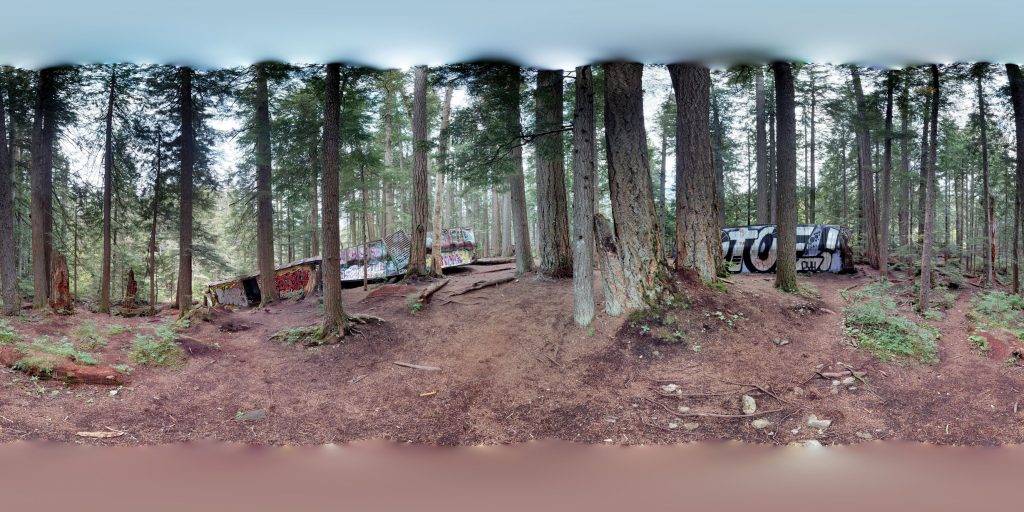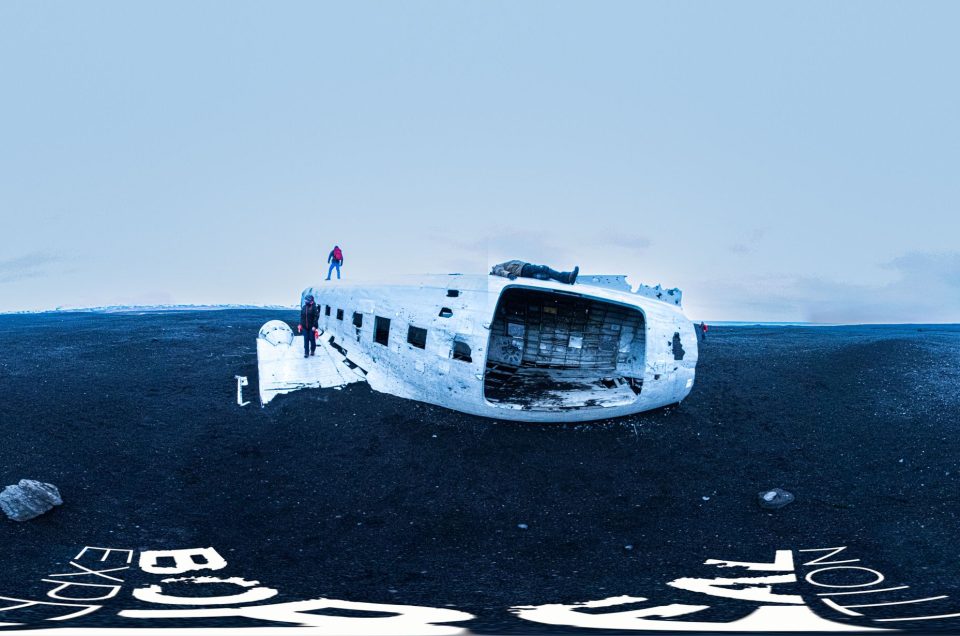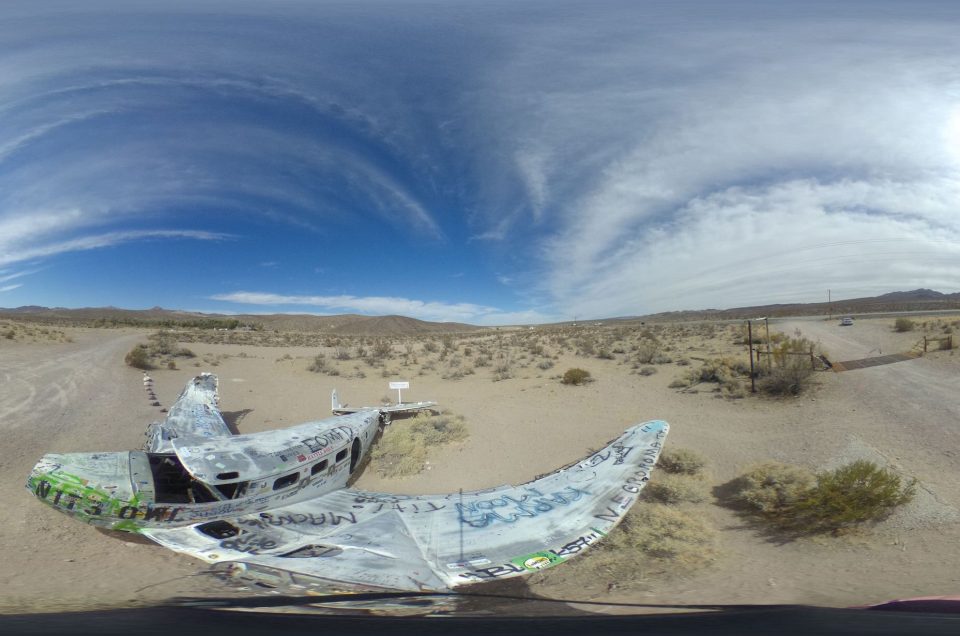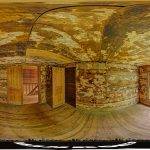The Whistler Train Wreck: A Journey Through Time and Art
Embark on a captivating 360-degree panoramic virtual tour of the Whistler Train Wreck, located deep in the woods. This immersive experience includes a series of comprehensive 360-degree panoramic images that showcase the rail cars scattered throughout the forested area. These images offer a unique perspective on what has now become a popular hiking trail, allowing viewers to explore the serene yet intriguing environment of the Whistler Train Wreck from the comfort of their own homes.
Images by: Francis Chiasson
Images by: Francis Chiasson
Images by: Francis Chiasson
Introduction: Nestled in the rugged terrain of the Coastal Mountains, just south of the world-renowned Whistler Blackcomb ski resort in British Columbia, lies a hidden gem steeped in history and swathed in an air of mystery – the Whistler Train Wreck. This site, once a scene of a dramatic derailment, has now morphed into a vibrant tapestry of urban art, attracting hikers, history buffs, and graffiti artists from around the globe.
The Wreck’s Historical Backdrop: The story of the Whistler Train Wreck begins in the early 1950s. It was a time when the railroads were the lifelines of Canada, transporting goods and people across the vast expanses of the country. The train, operated by the Pacific Great Eastern Railway (later known as BC Rail), was navigating the challenging terrain near Whistler when disaster struck.
The Fateful Day: In August 1956, the train, heavily laden with lumber, was traveling too fast to make a tight curve near the Cheakamus River. The excessive speed, combined with a possible mechanical failure, led to a catastrophic derailment. Several boxcars jumped the tracks, scattering across the forest and coming to rest in a chaotic jumble. Remarkably, there were no fatalities, but the incident left an indelible mark on the landscape.
The Aftermath and Abandonment: In the aftermath of the crash, the damaged boxcars were deemed too costly and difficult to retrieve. They were left where they fell, gradually becoming part of the forest itself. Over the years, nature began to reclaim the site, with trees and undergrowth intertwining with the twisted metal.
The Transformation into a Cultural Icon: Decades passed, and the Whistler Train Wreck evolved from a mere industrial accident into a canvas for creative expression. Graffiti artists began to leave their mark on the boxcars, transforming them into vibrant pieces of art. Each layer of paint tells a story, a testament to the ever-changing nature of street art.
A Hiker’s Paradise: The journey to the train wreck is as captivating as the destination itself. A relatively easy hike, accessible from the Sea to Sky Trail, leads adventurers through lush forests and over a suspension bridge spanning the Cheakamus River. The path to the wreck is a sensory experience, with the sounds of the river and the scent of pine in the air.
The Lure for Urban Explorers: Urban explorers are drawn to the Whistler Train Wreck for its unique blend of history, art, and the thrill of discovery. The site offers a rare opportunity to step into a time capsule, to explore the eerie, rusting relics of a bygone era, all while being surrounded by the natural beauty of the British Columbian wilderness.
A Canvas for Graffiti Artists: Graffiti artists have turned the train wreck into a dynamic gallery. The boxcars serve as large, metal canvases, showcasing a wide range of styles and messages. From intricate murals to bold tags, the art is constantly evolving, making each visit a unique experience.
Conservation and Respect: As the site’s popularity has grown, so has the need for conservation and respect for the environment. Efforts are being made to balance the preservation of the site’s historical and artistic significance with the protection of the surrounding ecosystem.
Conclusion: The Whistler Train Wreck is more than just a cluster of abandoned boxcars; it’s a cultural landmark that tells a multifaceted story. It’s a place where history, art, and nature intersect in a fascinating and accessible way. Whether you’re a hiker, an urban explorer, or an art enthusiast, the Whistler Train Wreck is a must-visit destination that offers a unique glimpse into a forgotten chapter of Canadian history, transformed into a vibrant, living gallery.
If you liked this blog post, you might like the Rio Vista on the Halifax Arches in Florida, the Rhyolite Train Depot in Nevada or the Grover Industries Factory in North Carolina.

A 360-degree panoramic image captured at the Whistler Train Wreck in Whistler, British Columbia, Canada. Image by Francis Chiasson.
Do you have 360-degree panoramic images captured in an abandoned location? Send your images to Abandonedin360@gmail.com. If you choose to go out and do some urban exploring in your town, here are some safety tips before you head out on your Urbex adventure.
Unlock the secrets of exploration by diving into precise GPS data available exclusively for an array of hidden gems and hundreds of other captivating sites, all within our members’ section. By investing in a Gold Membership, you’re not just gaining access; you’re securing a key to a vast, global archive of abandoned, untouched, and mysterious locations waiting to be discovered. Embark on your adventure with confidence, knowing every corner of the world can be within your reach. Don’t just observe—explore, discover, and claim the extraordinary journey that lies ahead with our treasure trove of world secrets. Subscribe now and transform the way you see the world!
Click on a state below and explore the top abandoned places for urban exploring in that state.






